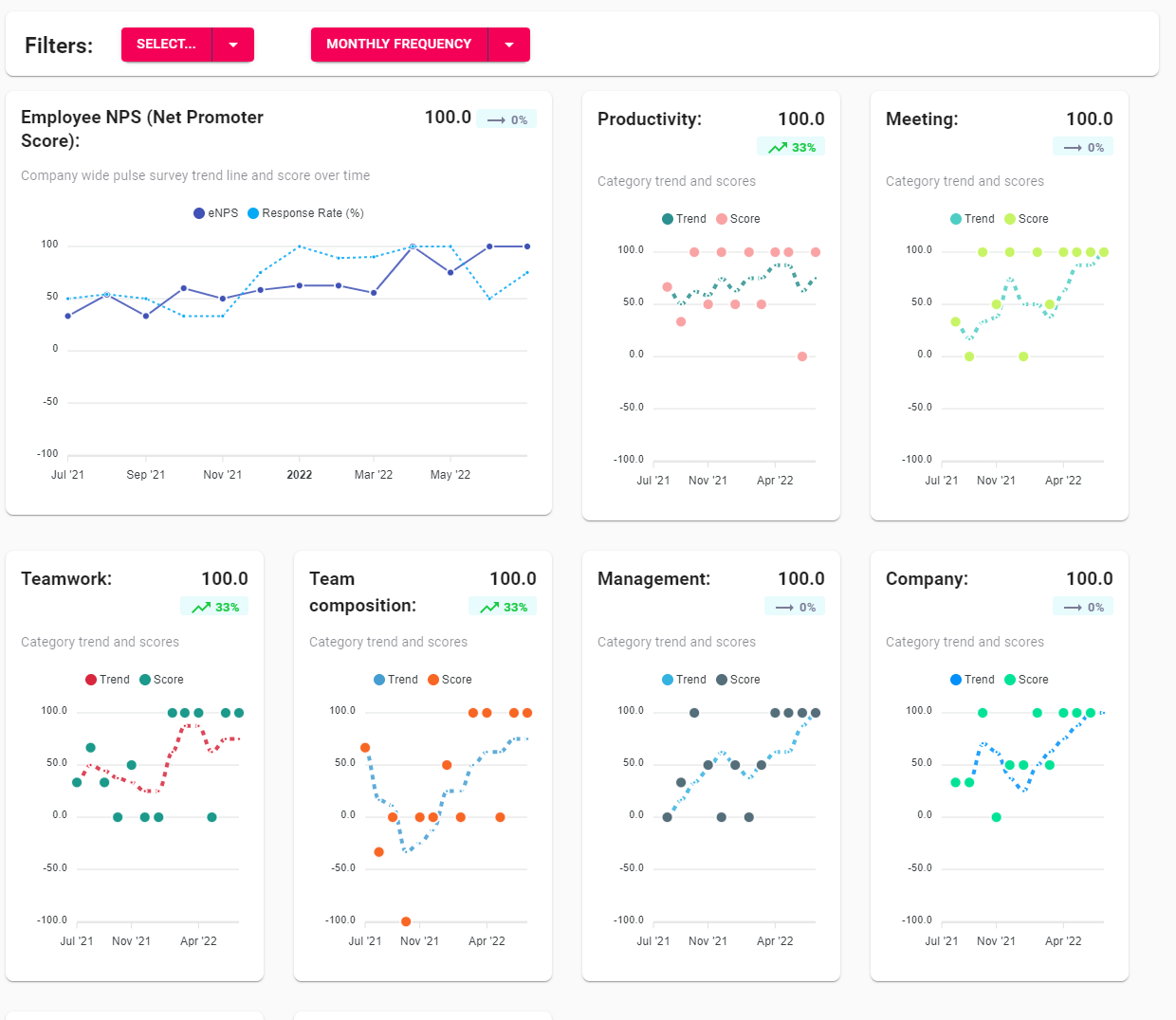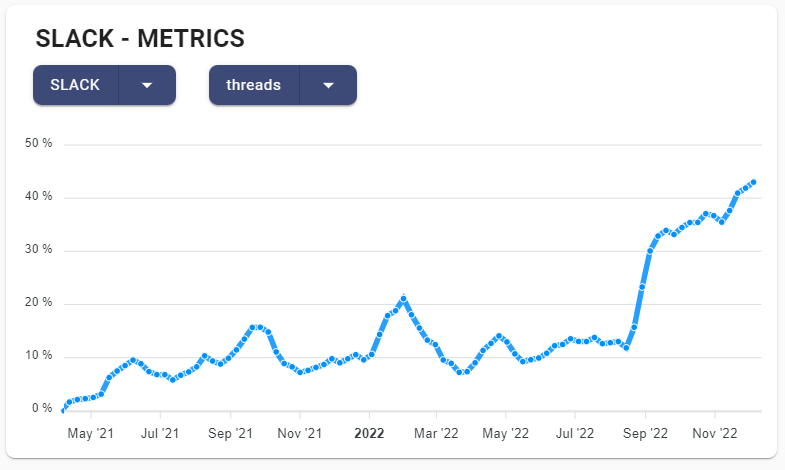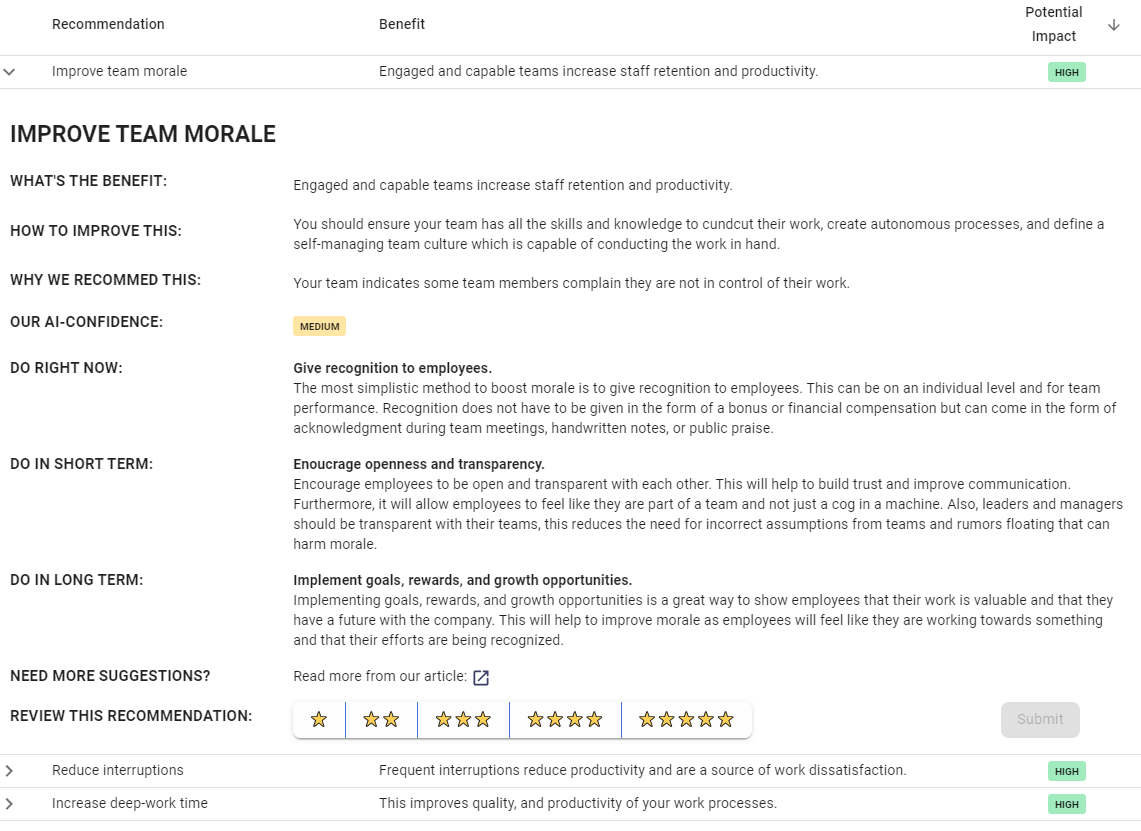In today's fast-paced world, improving team efficiency is more important than ever. With tight deadlines and increasing demands on time and resources, it's crucial that teams are able to work together effectively and get things done. However, improving team efficiency is easier said than done. It can be difficult to identify the specific areas where improvements can be made, and it can be even harder to implement the necessary changes. This is where data and analytics come in. By analyzing various sources of information about how a team works, it's possible to get a clear picture of what's working well and what can be improved. By using a company analytics platform like Flowtrace, leaders can gain valuable insights into their team's efficiency and take targeted action to drive improvement.
In this article, we'll explore the role of data and analytics in improving team efficiency, and we'll provide 5 strategies for leaders looking to boost the performance of their teams using data insights.

The role of data analytics in improving team efficiency
The role of data analytics in improving team efficiency is twofold. First, data can help leaders identify specific areas where improvements can be made. For example, if data from an employee survey indicates that a large percentage of team members are spending a lot of time on tasks that could be automated, it might be worthwhile to invest in process automation to free up time for more valuable work. Similarly, data on email and Slack communication patterns might reveal that certain team members are inundated with requests, while others have more time on their hands. This could be an indication that the workload is not evenly distributed, and steps could be taken to redistribute tasks more fairly.
The second way that data can improve team efficiency is by providing a clear picture of what's working well. For example, if data shows that a particular process is consistently producing good results in a short amount of time, it might be worth replicating that process elsewhere in the company. By understanding what's working well and why, leaders can make informed decisions about how to allocate resources and prioritize tasks.
As a combination, data is a powerful tool for improving team efficiency because it provides a factual basis for decision-making. Without data, leaders might have to rely on gut instincts or subjective opinions, which can be less reliable. By analyzing data from various sources, leaders can get a more complete and accurate view of how their team is functioning, and use that information to make data-driven decisions that drive efficiency improvements.
The various sources of data that our company's analytics platform utilizes
Our company's analytics platform utilizes various data sources to give leaders a comprehensive view of their team's efficiency. These data sources include:
Calendars: By analyzing data from team members' calendars, our platform can provide insights into how time is being spent, including how much time is spent in meetings, working on individual tasks, and collaborating with others. This can help leaders identify areas where time is being wasted, and make adjustments to schedules to improve productivity.
Processes: Cycle time data on how various processes are being completed can provide valuable insights into the efficiency of those processes. For example, if data shows that a particular process is taking much longer than expected, it might be worth revisiting the process to identify bottlenecks or inefficiencies.
Employee surveys: By regularly soliciting regular feedback from team members, leaders can get a sense of how well their team is functioning, and identify any areas that need improvement.
Slack communication: Analyzing data on how team members are communicating via Slack can provide insights into how efficiently they are collaborating and sharing information.
When we combine these and more various data sources, we can provide a wealth of information about how a team is functioning, and help you identify specific areas where improvements can be made.

Case study: How our platform helped client improve their team efficiency
One of our clients, a deep-tech company, was looking to improve the efficiency of their team's communication. Upon analyzing data from our platform, they discovered that only about 10% of their Slack messages were being sent in threads. This meant that a large percentage of their communication was occurring in the main channel, which made it difficult for team members to keep track of important discussions and made it easy for important information to get lost in the shuffle.
To address this issue, the deep-tech company implemented a new policy encouraging team members to use threads for all discussions that were not relevant to the entire team. They also provided training on how to effectively use threads to keep discussions organized and on track.
After just four weeks, the deep-tech company was able to increase their Slack thread usage to 45%. This had a number of benefits, including reducing the amount of clutter in the main channel, making it easier for team members to find and follow important discussions, and improving the overall efficiency of team communication. As a result, the deep-tech company was able to complete projects more accurately and with fewer mistakes, leading to increased productivity and happier employees.

5 strategies on how to use the data insights to drive efficiency improvements
There are several steps you can take to improve team efficiency using the data and insights provided by our platform. Here are 5 examples you take onboard today:
-
Identify areas for improvement: By analyzing data from various sources, you can get a clear picture of where your team is spending their time, and identify any areas where improvements can be made. For example, if data shows that a particular process is taking longer than expected, you can work with your team to streamline the process and make it more efficient.
-
Redistribute workload: Data on how team members are spending their time can also help you identify any imbalances in the workload. If certain team members are consistently overburdened, while others have more time on their hands, you can work to redistribute tasks more evenly.
-
Set goals and track progress: By setting specific, measurable goals for your team, and using data to track progress towards those goals, you can motivate your team to work more efficiently and stay on track.
-
Encourage the use of tools and best practices: Our platform provides insights into how team members are using various tools and technologies, such as Slack and email. By encouraging the use of these tools in the most effective way, you can improve team efficiency. For example, if data shows that a large percentage of emails are being cc'd unnecessarily, you can implement a policy to reduce the number of cc's and encourage more targeted communication.
- Regularly solicit feedback: By regularly soliciting feedback from your team, you can get a sense of how they are feeling about their workload and their overall job satisfaction. This can help you identify any areas that need improvement and address them before they become bigger problems.
When you follow these strategies with the data and insights provided by our platform helps you drive the efficiency improvements within your team. This in turn will create a more productive and engaged work environment.

Conclusions
Team efficiency is essential for success in today's fast-paced business world. By using data and analytics to understand how your team is working and identify areas for improvement, you can drive efficiency improvements and increase productivity. Our company's analytics platform provides a wealth of data and insights from various sources, including calendars, processes, employee surveys, Slack communication, and email habits. By using this data, you can get a comprehensive view of your team's efficiency and take targeted action to drive improvement.
If you're a leader looking to boost the performance of your team, we encourage you to try out our analytics platform and see the benefits for yourself. Our platform is easy to use and provides valuable insights that can help you drive efficiency improvements. So don't wait, start using our analytics platform today and take the first step towards improving your team's efficiency.
